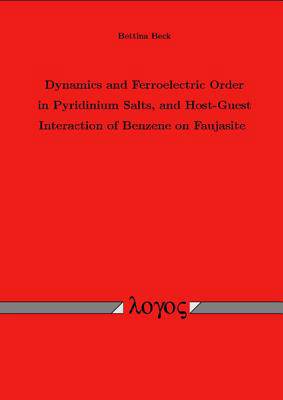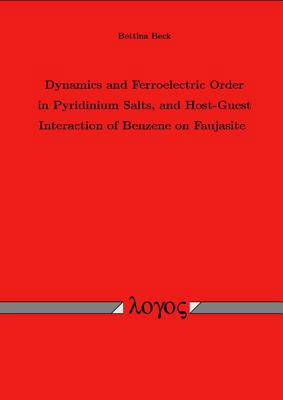
Je cadeautjes zeker op tijd in huis hebben voor de feestdagen? Kom langs in onze winkels en vind het perfecte geschenk!
- Afhalen na 1 uur in een winkel met voorraad
- Gratis thuislevering in België vanaf € 30
- Ruim aanbod met 7 miljoen producten
Je cadeautjes zeker op tijd in huis hebben voor de feestdagen? Kom langs in onze winkels en vind het perfecte geschenk!
- Afhalen na 1 uur in een winkel met voorraad
- Gratis thuislevering in België vanaf € 30
- Ruim aanbod met 7 miljoen producten
Zoeken
Dynamics and Ferroelectric Order in Pyridinium Salts, and Host-Guest Interaction of Benzene on Faujasite
Bettina Beck
Paperback | Engels
€ 98,45
+ 196 punten
Omschrijving
Muon spin resonance (muSR) and deuteron nuclear magnetic resonance were used to investigate the cation dynamics in pyridinium tetrafluoroborate. Compared to the macroscopic data the results show the individual ionic contribution permitting the interpretation of the intermolecular interaction which leads to ferroelectricity. Additional muSR measurements were performed on pyridinium perchlorate as the perchlorate shows a ferroelectric solid-solid phase transition of first order. This is in contrast to the tetrafluoroborate which shows a second order transition. The selectivity and efficiency of catalytic reactions in zeolites are mostly determined by the dynamics of the guest molecules because the latter is not only responsible for the mobility of the guest molecules within the lattice itself but also for the translational mobility to the active centers. In faujasites of type NaX and NaY the sodium ions were partly exchanged by metal ions in an aequous ion exchange procedure, and the zeolite was loaded with benzene. Compared to the muSR spectra of pure benzene the spectra of the metal exchanged zeolites show shifts of the resonance positions.
Specificaties
Betrokkenen
- Auteur(s):
- Uitgeverij:
Inhoud
- Aantal bladzijden:
- 174
- Taal:
- Engels
Eigenschappen
- Productcode (EAN):
- 9783832502966
- Verschijningsdatum:
- 15/08/2003
- Uitvoering:
- Paperback
- Formaat:
- Trade paperback (VS)
- Afmetingen:
- 145 mm x 211 mm
- Gewicht:
- 479 g

Alleen bij Standaard Boekhandel
+ 196 punten op je klantenkaart van Standaard Boekhandel
Beoordelingen
We publiceren alleen reviews die voldoen aan de voorwaarden voor reviews. Bekijk onze voorwaarden voor reviews.









